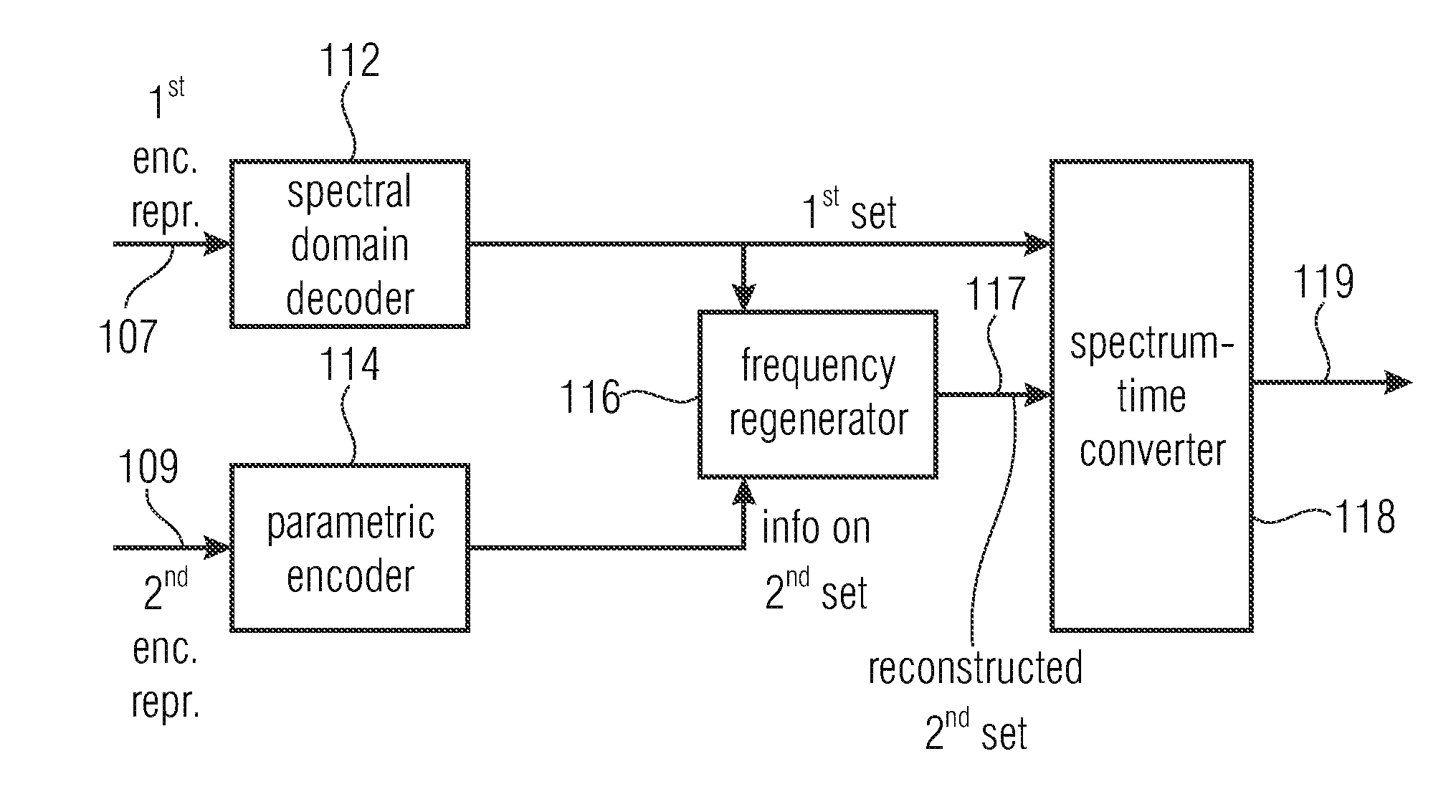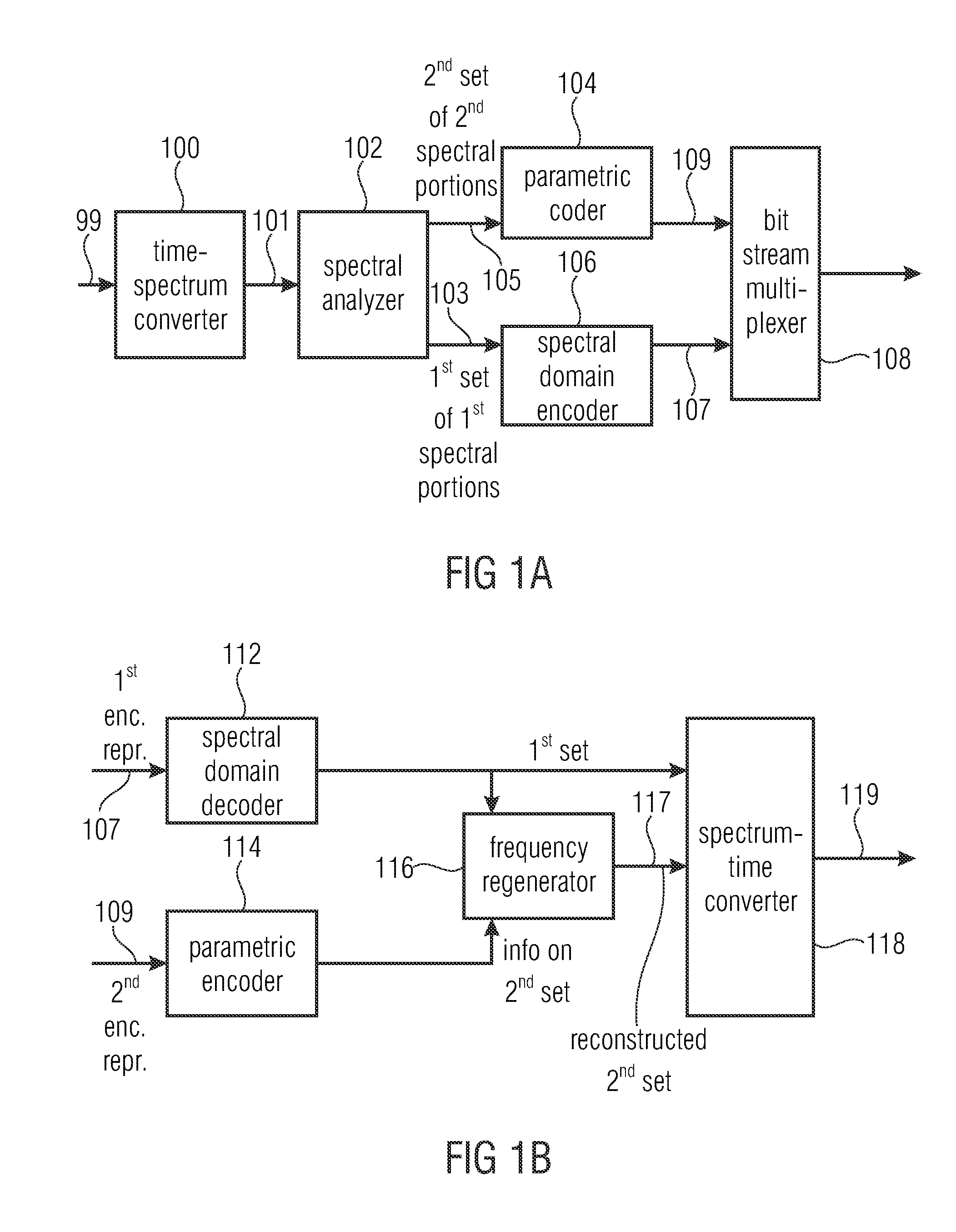Apparatus and method for encoding and decoding an encoded audio signal using temporal noise/patch shaping
a technology of temporal noise and patch shaping, applied in the field of audio coding/decoding, can solve the problems of large bitrate constraints on the storage or transmission of audio signals, large amount of coders' time and effort, and relatively complex analysis/synthesis stages, so as to minimize the effect of low bitrate perceptual annoyan
- Summary
- Abstract
- Description
- Claims
- Application Information
AI Technical Summary
Benefits of technology
Problems solved by technology
Method used
Image
Examples
Embodiment Construction
[0078]FIG. 1a illustrates an apparatus for encoding an audio signal 99. The audio signal 99 is input into a time spectrum converter 100 for converting an audio signal having a sampling rate into a spectral representation 101 output by the time spectrum converter. The spectrum 101 is input into a spectral analyzer 102 for analyzing the spectral representation 101. The spectral analyzer 101 is configured for determining a first set of first spectral portions 103 to be encoded with a first spectral resolution and a different second set of second spectral portions 105 to be encoded with a second spectral resolution. The second spectral resolution is smaller than the first spectral resolution. The second set of second spectral portions 105 is input into a parameter calculator or parametric coder 104 for calculating spectral envelope information having the second spectral resolution. Furthermore, a spectral domain audio coder 106 is provided for generating a first encoded representation 1...
PUM
 Login to View More
Login to View More Abstract
Description
Claims
Application Information
 Login to View More
Login to View More - R&D
- Intellectual Property
- Life Sciences
- Materials
- Tech Scout
- Unparalleled Data Quality
- Higher Quality Content
- 60% Fewer Hallucinations
Browse by: Latest US Patents, China's latest patents, Technical Efficacy Thesaurus, Application Domain, Technology Topic, Popular Technical Reports.
© 2025 PatSnap. All rights reserved.Legal|Privacy policy|Modern Slavery Act Transparency Statement|Sitemap|About US| Contact US: help@patsnap.com



